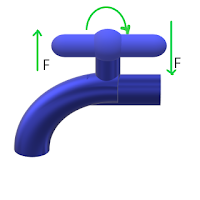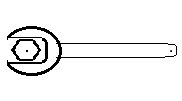Equilibrium of Body Class 10 Physics ICSE
Equilibrium of Bodies
When a number of forces acting on a body produce no change in
its state of rest of linear motion or rotational motion, the body is said to be
in a state of equilibrium.
1. Static equilibrium
A number of forces acting on a body and the body remains in
the state of rest under the influence of those forces.
ex:1 when two equal and opposite forces act up on a body
lying on a flat surface, the body remains at rest. Hence that body is in static
equilibrium.
ex: 2 The beam balance with equal weights on both pans is in
static equilibrium because the anticlockwise moment of force balances the
clockwise moment of force.
2. Dynamic Equilibrium
If a body remains in the state of motion (translational or
rotational) under the influence of several forces then that body is said to be
dynamic equilibrium.
ex 1 : The weight of a falling rain drop balances the sum of
the buoyant force and the force due to friction. Hence the falling rain
drop will be in dynamic equilibrium and
falls down with a constant velocity.
ex 2 : When the weight of an aeroplane is balanced by the upward
lift the aeroplane moves at a constant
height.
Conditions for equilibrium:
1. The resultant of all the forces acting the body should be
zero.
2. The algebraic sum of moments of all the forces acting on
the body about the point of rotation should be zero.







